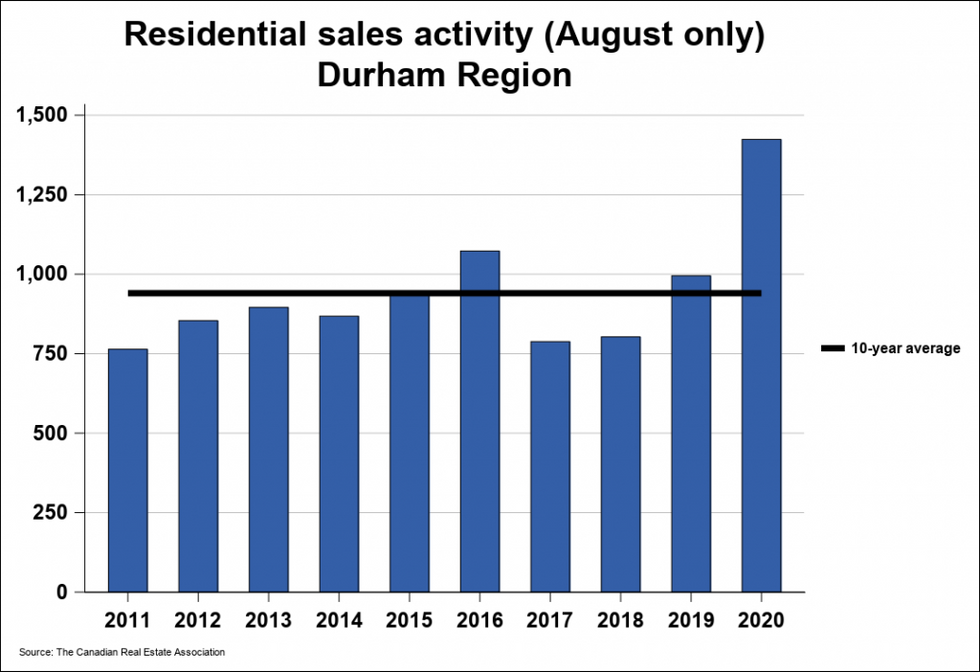As the coronavirus pandemic caused the economy to slow and social distancing measures were put in place to curb the spread of the virus, housing market activity across the province undoubtedly came to a standstill, for a time. But now, activity is once again thriving -- particularly in the Durham region.
Indeed, in August, housing activity was on fire in Durham region, where summer was closed out with a recorded 1,515 residential transactions -- that's a significant 45% increase from August 2019, according to CREA. The number of new listings also increased in tandem, up 19% on a year-over-year basis with 1,839 new properties listed.
READ: Has COVID Really Resulted in Toronto Residents Fleeing to the Suburbs?
What's more, the average price in Durham reached $734,136 -- a 19.5% increase compared to the same time last year. On a month-over-month basis, the average price increased slightly by 3.5.
The MLS Home Price Index Composite Benchmark also increased in August, up 15.06%, to $653,400. The benchmark price for a detached home in Durham Region also reached $706,300 representing 14.60% growth annually.
“Our market has experienced a strong rebound as home sales continue to hit record results this summer,” said DRAR President Vicki Sweeney.
Sweeney said there's been an increase in demand for housing, which is reflected in the average days a home spends on the market. In August, the average days on market reached 14 in comparison to the average of 29 days reported in August 2019.
“As we continue to see a demand for homeownership, it is important our policymakers remain focused on bringing more supply to our markets,” said Sweeney.
“We have to focus on supply; the economic recovery and low-interest rates coupled with the pent-up demand from the spring market will continue to drive sales. In Durham’s Clarington market, days on market reached 11 days with 103 percent sales to new listing ratio.”
Zain Jafrey, a real estate agent with Coldwell Banker, has also noticed the recent growth in the Durham region, which he says was fueled primarily by low-interest rates, as well as consumer demand for more space.
"We seem to be in a position where demand is continuing to outpace supply, and that is reflective through the average days on market for properties. Homes are being priced below market value to entertain as many potential buyers, receiving several offers, and are being sold in a matter of days. Many properties are even selling the same day that they’re being listed," explained Jafrey.
"What I am particularly noticing is that a large percentage of homebuyers in Durham Region are from the Toronto area, and are looking to either purchase their first property or upsize from their current space closer to the city. For many buyers moving to the suburbs, their must-haves list includes space for a home office and an exclusive outdoor space such as a backyard."
Looking ahead, Jafrey says he thinks there will continue to be an increase in prices through to the end of the year. "Low-interest rates, the pent-up demand for homes, and the limited supply of properties will continue to drive up sales and prices in the Durham area."
If one thing's for certain, the COVID-19 pandemic has produced several unique trends in the GTA housing market over the last few months as more families from the city are moving to the suburbs in search of more space and affordability, both of which are apparent in the Durham region.






















